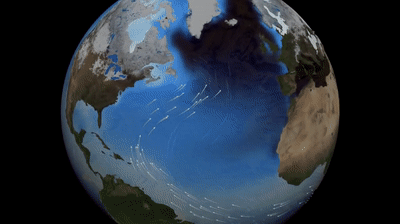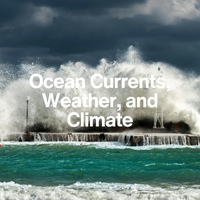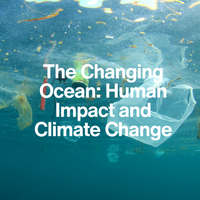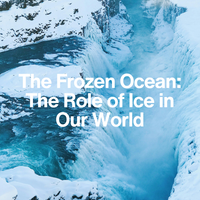LESSON 5
How Does the Ocean Store and Move Heat Around the Planet?

Introduction:
The Ocean — Earth's Hidden Heat Engine
The ocean is far more than just a collection of water—it’s the planet’s largest heat reservoir. Acting like a giant thermal battery, it absorbs, stores, and slowly releases solar energy. Without the ocean moving heat around, parts of the world would be unbearably hot while others would freeze.
Understanding how this hidden engine works is key to understanding climate, weather, and even life itself.
1. How the Ocean Stores Heat
The ocean stores heat from the sun primarily in its surface layer, where sunlight penetrates.
Fun Fact
About 93% of the extra heat trapped by greenhouse gases has been absorbed by the ocean!
2. How the Ocean Moves Heat
Stored heat doesn’t stay trapped near the equator—it’s constantly on the move, driven by winds, Earth’s rotation, and differences in water density.
Surface Currents:
Created by: Winds blowing across the ocean’s surface + Earth’s rotation (the Coriolis Effect). They act like massive conveyor belts, redistributing heat and shaping regional climates.
Major examples
Fun Fact
Europe is much warmer than parts of Canada at the same latitude because of the Gulf Stream!
Deep Ocean Currents (Thermohaline Circulation):
Created by: Differences in TEMPERATURE ("thermo") and SALINITY("haline").
Process:
- At the poles, cold, salty water becomes very dense and sinks.
- This deep water slowly spreads along the ocean floor toward the equator.
- In warmer regions, water rises again (upwelling), completing a global conveyor belt.

Did You Know?
This massive deep-sea flow helps transport heat across thousands of kilometres—and it can take up to 1,000 years for a water molecule to complete its journey!
3. What Happens Without Ocean Heat Transport?
Without the ocean moving heat:
Essentially, the ocean acts like a planetary thermostat—keeping Earth's temperature and weather patterns livable.
4. Ocean Heat and Climate Change
In the age of climate change, the ocean’s role as Earth's heat regulator has become more important—and more vulnerable—than ever before.
As the ocean absorbs the majority of the excess heat from greenhouse gases, it helps slow the rate of warming in the atmosphere. But this comes at a cost: the ocean itself is undergoing dramatic changes.
What's Happening Now
Conclusion
The Ocean—Our Climate’s Silent Partner
The ocean is not just a life-support system; it's also the engine behind some of Earth's most extreme and life-changing weather events. Understanding how ocean heat fuels hurricanes—and how climate change is amplifying them—is crucial as we face an era of stronger, wetter, and more destructive storms.
Every coastal city, every island, and even inland regions are tied to the ocean’s moods. The better we understand it, the better we can prepare for what’s to come.
Key Takeaways:
The ocean absorbs most of the sun’s heat and slowly releases it.
Surface and deep ocean currents move heat around the globe.
Ocean heat transport keeps Earth’s climate relatively stable.
Climate change is affecting how the ocean stores and moves heat, with major consequences.
NEXT LESSON
What Lives in the Deep Ocean?
In the next bloc, we’ll dive into the mysterious world of the deep ocean—where darkness reigns, creatures glow, and volcanoes erupt underwater.























